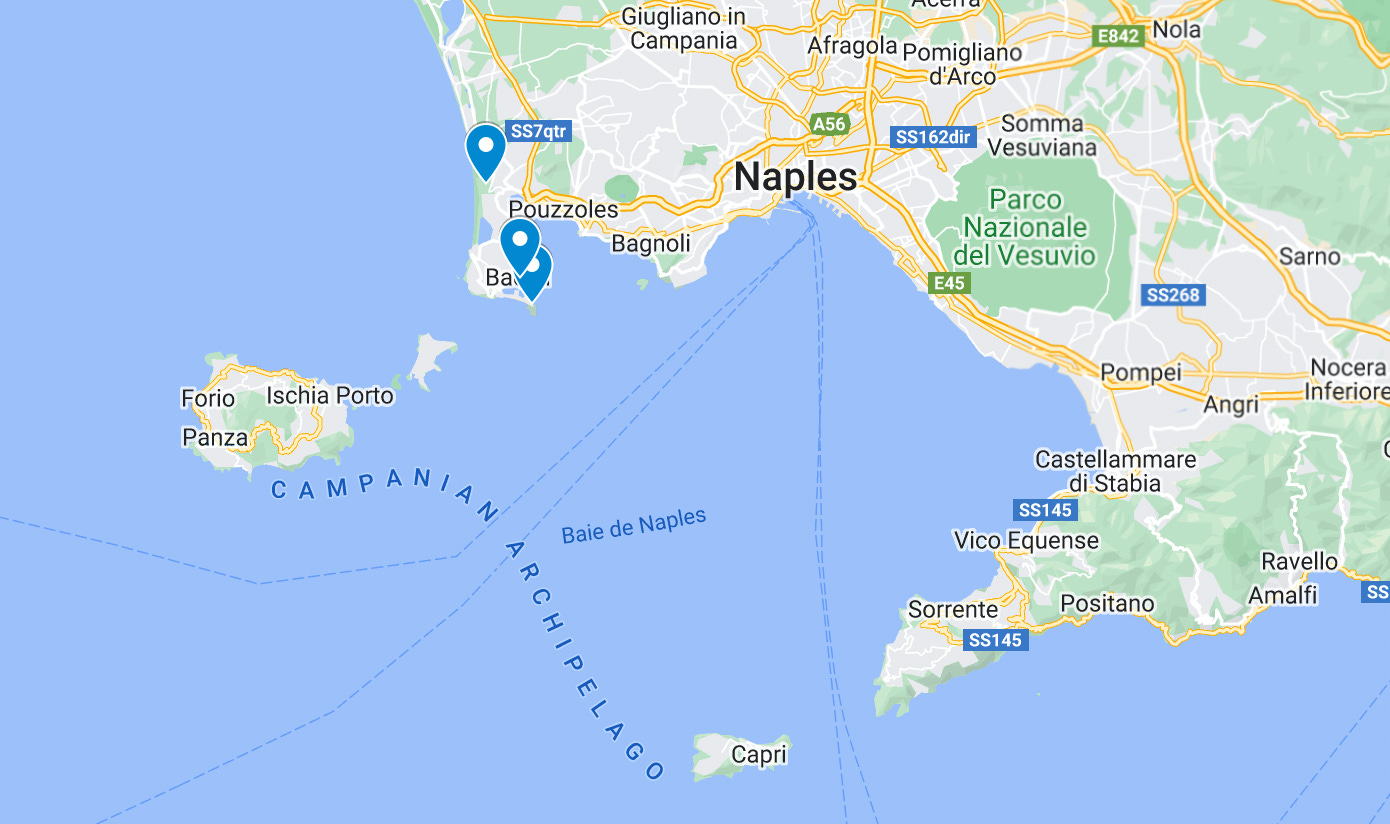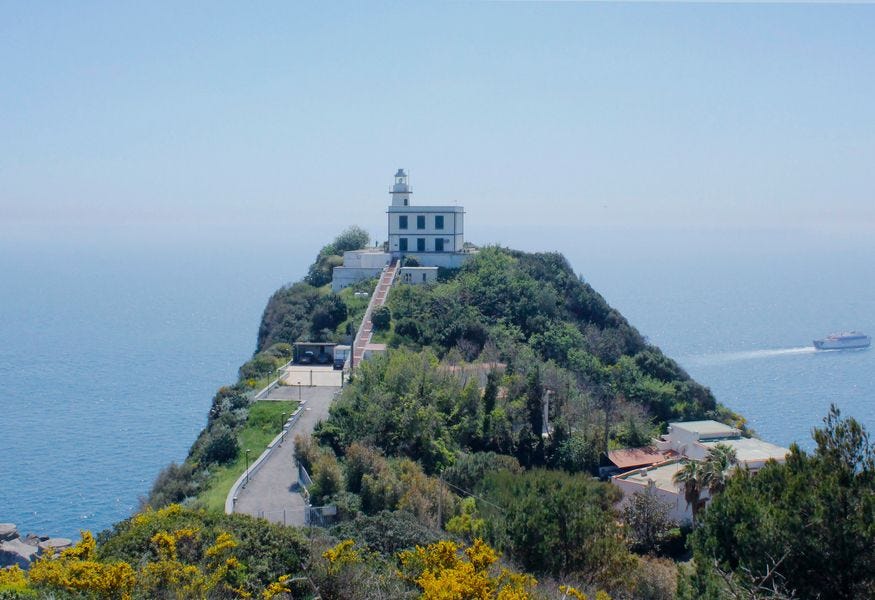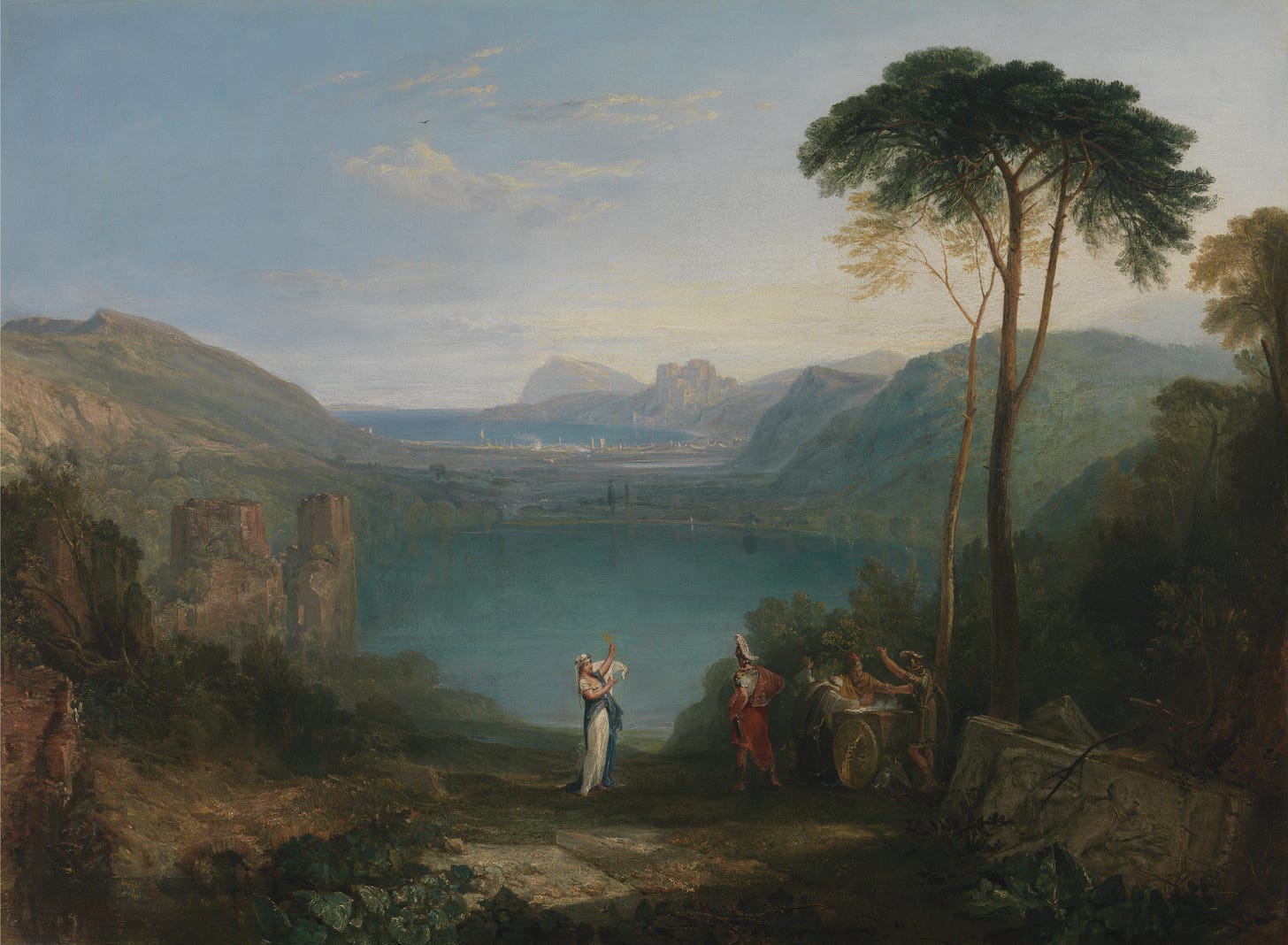The Bay of Naples: Cuma, Bacoli, and Miseno
The Bay of Naples isn’t perfect. It’s not a smooth crescent, but rather cragged, like the outline of a crab; it has a jumble of smaller bays which fit into the larger gulf. It looks like a peculiarly shaped antibody - developed with precision by the immune system to bind to a specific antigen. I’m sure any geographer would have a great time explaining why it has this uneven shape. The answer has to be that there are different types of rock on the coastline: softer, easily erodible rock in places like Sorrento, Pozzuoli, Stabia, and Naples itself, interspersed with harder, volcanic clumps at Vesuvius and elsewhere along the coast.
Perhaps its geography is to its advantage. Not having a uniform curving surface creates division, allowing lots of smaller hubs to emerge - places like Herculaneum, Pompeii, Bagnoli, and even Miseno on the northernmost headland. Each one of these places was an independent centre, not attached to the sprawling Neapolitan metropolis.
The Bay of Naples is very popular with tourists. Who can blame them? There’s so much to see and countless places to explore. There’s Pompeii, Vesuvius, the island of Capri, Ischia, Sorrento, and The Amalfi Coast just a few miles away with all its wonderful beaches. You could spend a whole week just in Naples, eating the finest pizza, wandering along the cobbled streets, or reading a book in a nice bar looking out onto the harbour.
Culturally, there are also some lesser-known spots in this part of Campania. If you want to avoid the crowds at Pompeii, there’s Cuma Archaeological Park 30 minutes west of Naples. It began as the first Greek colony on mainland Italy in the 8th century BC before being taken into Roman control in the 300s. If you make the trip today, there’s still plenty to see - classical remains, caves, and strange-looking tunnels. Lake Avernus, which is small and circular, sits right beside Cuma. It’s actually a volcanic crater lake and most of them look pretty similar to each other. What’s notable about Cuma and Avernus though, is that this is where you can find the entrance to the underworld, guarded by a most-serious priestess at The Temple of Apollo. In Book 6 of Virgil’s Aeneid, the greatest work of literature from Roman times, Aeneas comes to Cuma, meets the priestess and descends into the underworld to meet the ghost of his father. It’s great that this is a real place. You can even go for a run around Lake Avernus - there’s a little boardwalk. While you jog, you can pass the remains of the Temple of Apollo which means you’ll be stepping where Aeneas and Virgil might have stood.
After you’ve had your fill of Cuma, you can head 10km south to Bacoli which was known as Baiae in Roman times. I like to think of Baiae as the Roman equivalent of a classy Las Vegas or Ibiza. It was a seaside resort where the aristocracy would head whenever they wanted a break from Rome. It was infamous for its hedonism, scandal, and luxury. Julius Caesar and Nero both had elegant villas there and the poet Catullus wrote poems cursing the place for taking his mistress, Lesbia, away from him.
Once you’re in Baiae, you have to travel the last 3 kilometres over to Miseno, the end of the headland. There’s an elegant all-white lighthouse, il faro di Miseno, that sits on the last crag of rock. It has dark blue shutters and is surrounded by clusters of juniper and myrtle bushes. It's a peaceful spot to look out onto the Mediterranean. From here, you can see the whole bay. You’ll be seeing what Pliny the Elder saw when he was stationed there back in 79 AD. A famous polymath, former soldier, and unwilling politician, Pliny was commander of the naval fleet stationed at Misenum. He and his nephew, Pliny the Younger, both watched Vesuvius erupt from this faraway position. His nephew came to be an important legal and political influence in Rome as well as an invaluable source for historians thanks to the letters he wrote and published throughout his life. One letter details the last day of his uncle’s life during the eruption of Vesuvius. They were both at Misenum when they heard a noise and saw a giant cloud above the mountain. Pliny the Elder ordered ships to be readied so he could approach the mountain and study what was going on. But he suddenly received a distressed letter from his friend Pomponianus, a senator who was stuck at Stabiae, a town near the mountain. Pliny the Elder valiantly sailed over, not before famously remarking “Fortes fortuna iuvat”, the cursed phrase meaning ‘fortune favours the brave’. During the escape attempt, Pliny the Elder went for a nap, woke up, and then passed away. Apparently, he was a fairly big chap, had breathing problems, and often chose to be carried around in a chair when he was in Rome. As he told his nephew, walking wastes valuable moments that could be dedicated to studying.
In the new year, I hope to head back to this part of Italy and spend a day working my way through this little section in the north of The Bay of Naples. I’m particularly looking forward to visiting Cumae or imagining myself as Pliny the Younger at Miseno. Until then, I’ll make up for lost time by returning to J.M.W Turner’s painting “Aeneas and The Sibyl, Lake Avernus”. This is a painting based on early lines from Book 6 of the Aeneid. I particularly like the landscape behind the Aeneas and the Sibyl - you can see how it stretches rockily towards Baiae and Misenum, exactly how it still does in our present day.







